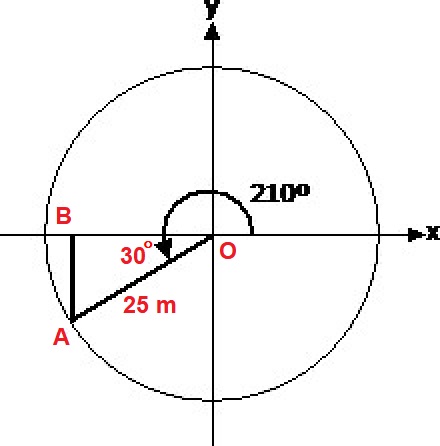Question #69623
2 Answers
Explanation:
.

In the right triangle
The x-component
Explanation:
OK. I will walk you thru how to do this. Draw x and y axes. Off to the right, along the x axis, is zero degrees. The direction 210 from the x axis is 210 degrees, counterclockwise from the x axis. Click this link to see a picture

Add a line on your x-y axes from the origin like the red line on the website that the link brought up. The inner blue arc is a
Now, put your trigonometry skills to work. Let the line you drew have a length of 25 m. From the end of that 25 m line, draw a line to the -x axis, parallel to the -y axis. Including the -x axis, you have a right triangle. We established at the end of the previous paragraph that the most acute angle of that triangle is a
I got
#25 m*cos30^@ = 21.65 m#
Now, let's do that with the angle being
#25 m*cos210^@ = -21.65 m#
So, using
Using that process, the y component of that displacement is
#25 m*sin210^@ = -12.5 m#
I hope this helps,
Steve


